Arts & Culture

BEFORE WE GET to the best movies of 2018, let’s talk about the most memorable moments of this year in cinema. Neil Armstrong casting his daughter’s bracelet into a canyon on the moon in First Man, a story as much about one person’s grief and desire to connect with another as about our species’ ambition and desire to conquer the final frontier.
The dawning realization, in What They Had, of why Robert Forster steps out of the bedroom he has shared with Blythe Danner for 60 years, sparing her more suffering and loving her until the end.
A deceptively simple scene—a conversation in a car going from one neighborhood to another—that’s a revelation of social inequality and how near yet far we live from each other. In minutes, Widows covers centuries of relationships of power.
An unexpected funeral in The Gospel of Eureka that breaks the audience’s heart and calls forth our loves.
And the titular character Christopher Robin, who holds Pooh Bear’s hand as they walk through a field, as though Terrence Malick is directing the film.

TWENTY YEARS AGO, when we talked about the “digital divide” we meant things like low-income people’s access to computers and the internet. But according to a recent study from Common Sense Media, that turn-of-the-century gap has largely closed. Seventy percent of families with an annual household income below $30,000 now have a computer at home, and 75 percent have high-speed internet access. In addition, low-income families are near the national average for access to mobile devices such as smart phones and tablets.
But another digital divide is emerging that could have more dangerous long-term consequences.
Researchers have discovered a lot about how brain development and personality formation happen, and their lessons keep coming back to the importance of real-world experiences and face-to-face human interactions, especially in the childhood years. To avoid passivity and mental laziness in their children, many high-income parents are starting to limit their children’s time on digital devices. Common Sense Media found that the children of upper-income families spent half as much time in front of screens as did children of low-income families.
Several private schools are even dialing back their reliance on digital technology. Meanwhile, in many public schools, students are being issued Chromebooks or iPads and shunted into online learning programs. According to Education Week, American schools spend $3 billion per year on digital content, as well as $8 billion-plus yearly on hardware and software, with little to show for it so far in the way of improved learning.
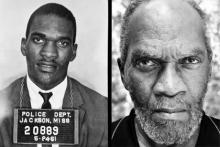
Freedom Ride
The expanded edition of Breach of Peace: Portraits of the 1961 Mississippi Freedom Riders revisits a pivotal civil rights campaign. Filled with mugshots and recent interviews of several riders who were arrested in Jackson, Miss., Breach of Peace honors a historic act of protest. Vanderbilt University Press
One Body, Many Parts
Together at the Table: Diversity Without Division in the United Methodist Church, by Bishop Karen P. Oliveto, the UMC’s first openly LGBTQ bishop, is timely as the denomination nears a potential split over sexuality. Oliveto outlines how her denomination can remain whole. Westminster John Knox Press

IN THE SPAN OF OUR HOUR-LONG conversation, Mimi Mutesa, an emerging Ugandan-American photographer-videographer and an undergraduate student at Calvin College, a Christian Reformed school in Michigan, easily gives her thoughts on everything from the complexities of blackness to the policing of women’s bodies. However, when I ask her how her faith influences her work, there is a brief pause on the other end of the line.
“I don’t think it’s ever crossed my mind until this moment,” she says. When pressed, she explains that she’s “trying to tackle enough issues” in her art as it is, and evangelical culture has “far too many other problems” for her to address. Mutesa assures me that she still identifies as a person of faith but maintains that her relationship with God is “separate” from her relationship to art and social justice.
Perhaps this separation is a necessary one. It’s hard to imagine the average evangelical church embracing Mutesa’s colorful portraits of nude black joy. Her sentiments echo an unspoken opinion held by many young Christians, that if you want to be radical like Jesus was, you must do so on the margins of Christianity. More traditional folks may see this rush to the margins as a slick avoidance of the Christian call to profess one’s faith, or a symptom of postmodern discomfort with absolute truth. But what is more likely is that millennials of faith, especially millennials of color, want to engage with values traditionally cherished by the church but see modern-day Christianity as a direct hindrance to that sort of exploration, since significant portions of the church have been antagonists in struggles for social equality.
Reticence to conflate personal faith with artistic vision is deeply connected to a complex historical dialectic between the arts and the church: Mutesa’s midconversational pause is supported by precedent.

EVERY WEDNESDAY night, Sam’s youth group met in a darkened gymnasium dressed up as a rock concert: decorative fabrics, professional sound equipment, and a light show. A thin, attractive youth pastor with a soul patch and skinny jeans would deliver a message about the evils of sex, drugs, and alcohol.
In Matthew’s gospel, Jesus says, “You have heard that it was said, ‘You shall not commit adultery.’ But I say to you that everyone who looks at a woman with lust has already committed adultery with her in his heart.” This was a favorite verse of Sam’s youth pastors, who wielded it to warn kids against even thinking about sex. If lusting after a woman was just as bad as committing adultery, their logic held, then even thinking about sex is a sin.
“The weird thing,” Sam told me, “was that it wasn’t date rape or sexual harassment or even treating people disrespectfully that they were worried about. It was ‘impure thoughts’ and lust.”
There are two problems that I see here: One, these were teenagers, whose bodies are designed by God to become sexual, and two, the Greek word for lust, epithymia, is about general desire, not thinking sexual thoughts. If epithymia was a term for sexual desire, it would make some other things Jesus said super weird. (For example, Luke 22:15: “And he said to them, I have had sexual thoughts about eating this Passover with you before I suffer.”)

“Justice” was on people’s hearts, minds, and search histories this year. The word was named Merriam-Webster’s "Word of the Year" for 2018 after being consulted by users 74 percent more than in 2017.

WHEN I WAS a high school soccer and basketball player, locker rooms were a sanctuary for me. I remember elaborate pregame handshakes and earnest debates over whether it was okay to pray for a win. I chatted with teammates about defensive strategy, physics homework, and crushes. But I do not remember anyone ever bragging about sexual assault.
Donald Trump excused as “locker room talk” his vulgar boasting about kissing, groping, and trying to have sex with women during the infamous 2005 conversation caught live by Access Hollywood and released during the 2016 campaign. Trump’s lewd remarks still loom large for me, because I refuse to normalize having an admitted sexual assaulter in the Oval Office and also because UltraViolet, a creative women’s advocacy organization, periodically plays that videotape on a continuous loop in front of the U.S. Capitol. Tourists, members of Congress, and everyone else get a regular reminder of who is in the White House.
However, as UltraViolet’s action and the flood of #MeToo testimonials demonstrate, it is not enough to shine a light on the prevalence of sexual violence. Revelation alone does not beget liberation. We can’t simply hold up a mirror to our cultural misogyny and expect the image to change. For real transformation, we must project a true image—an imago dei —rather than our current distortion.
1. VIDEO: The Church That Meets in a Parking Lot
Every year thousands of churches shutter their doors and die. But here's one congregation that found that shutting their doors — and destroying their building — gave them a new way to survive. Watch and learn more about Los Angeles First United Methodist Church.
2. He Built an Empire, With Detained Migrant Children as the Bricks
The New York Times does a deep dive on the founder of Southwest Key Programs, which has collected $1.7 billion in government contracts and houses more children who have crossed the border than any other detention group in the nation.

Last week, the world was introduced to John Allen Chau, the U.S. American “adventurer” and missionary who was killed by an indigenous group on North Sentinel Island. According to a statement from missionary organization All Nations, Chau was a “seasoned traveler who was well-versed in cross-cultural issues” and had “previously taken part in missions projects in Iraq, Kurdistan and South Africa.” Now, Indian police have begun the dangerous mission of trying to recover the body even though a tribal rights group has urged officials to call off the search, claiming it puts them and the indigenous group in danger.

On November 12, news broke that Christian songwriter Kurt Kaiser had died at 82. His work, which included memorable songs such as “Pass It On” and “Oh How He Loves You And Me,” spanned nearly 50 years. Kaiser’s name appeared on more than 25 albums and he received a lifetime achievement award from the American Society of Composers, Authors, and Publishers for his contribution to Christian music. One of his songs remains one of the most important in my life, some 30 years after first hearing it.
1. How to Have a Conversation with Your Angry Uncle Over Thanksgiving
Get some practice, via the Angry Uncle Bot, courtesy of New York Times.
2. This Is the Face of the Reconquista
“They are too young to have heard how the words Mexican and American have used against one another. In their lives, they have been combined into one. The contours of their lives cross boundaries. The hard lines of difference and the borders of the past have not formed walls of divisions for them.”
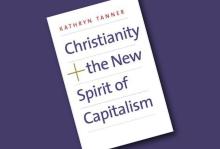
FINANCE-DOMINATED capitalism uses a variety of institutional means to single out individuals and render them accountable for their own fortunes, the bearers of either praise or blame. Economic success or failure becomes one’s individual responsibility, revelatory of who one is as a person. Moralized evaluation of individual success or failure figured prominently in the old Protestant work ethic and now reappears in exaggerated form within a finance-dominated work ethic.
Economic success or failure in that old religious ethic was deemed indicative of one’s fundamental individual character—reflective, that is, of the particular standing before God that defined one in religious terms, success being a mark of election to salvation, failure a sign of exclusion. Hoping to confirm one’s salvation by the character of one’s economic activity, one worked hard as capitalism demanded—to gain economic success and in that way distinguish oneself from others, not just economically but religiously.
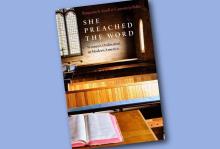
WHEN I WAS IN COLLEGE, I asked one of my faith leaders at the time why no women were in positions of authority in that ministry. He said that the male leaders’ wives were always available to serve as mentors. Besides, he added, if they hired a woman, she would just get married and quit to raise a family.
I left, I fumed, and then I read Sarah Bessey’s Jesus Feminist, which told me that not only could women serve as pastors and leaders in the church, but that Jesus wanted them to.
If that were so, I wondered, why had I encountered so few female faith leaders?
Benjamin R. Knoll and Cammie Jo Bolin have provided an answer. In She Preached the Word: Women’s Ordination in Modern America, Knoll and Bolin examine why women still make up just 15 percent of congregational clergy.
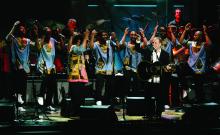
ON SEPT. 22, 2018, Paul Simon took to an outdoor stage in his native borough of Queens, N.Y., for the last show of his aptly named “Homeward Bound” farewell tour. After 52 years near the top of the music business, Simon was finally ready to get off the bus for good. Simon’s not taking a vow of musical silence, but he does say that he has no plans for further work.
So, let’s take the man at his word and assume that this could be a good time to assess what the singer-songwriter has meant to his audiences, his country, and, in the end, the great march of human culture.
That may sound a little grandiose for a guy who started as a hack songwriter in the Brill Building pop factory and made his first record (with Art Garfunkel, of course) under the name “Tom and Jerry.” But after the whole “The Sound of Silence,” folk-rock thing passed, Simon went on a long, long run in which he often elevated the American pop song to the level of high art. And, from “America,” dropped into the maelstrom of 1968, to the Nixon era’s “American Tune,” to “Wristband” in the age of Trump, he occasionally even captured the spirit of his age in a memorable, hummable verse, chorus, and bridge.
In brief, the guy’s a genius. And, though he started in the era when singer-songwriters were supposed to be the new poets, his real genius turned out to be musical: those infectious tunes and, from the mid-’70s on, those propulsive rhythmic arrangements.

In the Key of Policy
Neneh Cherry's effortless vocals and impressionistic lyrics reverberate with honesty in her fifth album, the personal and provocative Broken Politics. Complex, multilayered instrumentals featuring harp, brass, and steel drum form an unexpected backdrop for songs about refugees, women's rights, and gun violence. Small Supersound/Awal Recordings
Protest 101
How to Read a Protest: The Art of Organizing and Resistance explores the evolution of mass demonstrations in America since the 1963 March on Washington. Drawing on 30-plus years as a grassroots organizer, L.A. Kauffman sheds new light on how and why protests work. University of California Press

The first cast in the ochre light of the dawning sun is a morning prayer, filled with hope and faith that ceremonies sought in earnest will feed the soul. I reel dutifully, waiting for a faint tap on the end of my line. My father stands at the front of the boat, scanning for ripples on the water in the low light. “Wachale!” he exclaims in joking Spanglish as he reels in the first largemouth of the day. Two Mexican-Americans bass fishing in Texas. This is the face of the Reconquista.
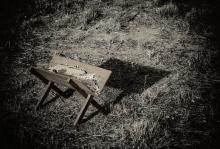
“The last will be first, and the first will be last.” —Matthew 20:16
I know what I am:
an earthen vessel guiding cows, goats, and sheep’s
chaotic feeding, their chorus of maws bleating,
baying, snapping open and shut a celebration
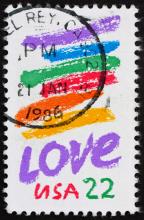
IN MY FIRST week of design school, I found myself riding Austin’s notoriously limited public transit system, asking fellow riders why they used it, what would encourage them to ride more often, and what they would change about the service.
After a handful of interviews, my rides yielded an unexpected insight: Users didn’t like Capital Metro’s expanded hours and new bus routes. The changes, implemented in June, were ostensibly for the riders’ benefit. But people’s routine included a strong aversion to change. And for a population already dealing with a rapid rate of change in their city, the new routes were especially disorienting.
Any externally forced change can represent an existential threat—as we know all too well from our daily news cycles. Even something as small as the sudden restructuring of our—or our kids’—commute can throw our perceptions of relational, financial, or political safety into jeopardy.
We’re in a wearying time. And looking at CapMetro users’ responses, I began to wonder whether we can build levity into a daily commute as a form of comfort blanket for these users. How can we offer delight as an antidote to people who are really, really weary of change?
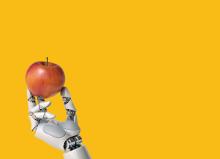
ON JAN 9, 2007, STEVE JOBS stepped onto a stage in San Francisco, his trademark black mock-turtleneck blending with the shadowed backdrop, his clipped hair and lean countenance offering a monk-like silhouette against the screen.
Jobs stepped forward and raised his arms. And there it was, almost inconspicuous in the palm of his hand. “Today, Apple is going to reinvent the phone ... here it is ... the iPhone.” Naming a new god.
At the time, no one consciously believed that smartphones, the internet of things, or ubiquitous computing would save us. Yet, as the encyclical Laudato Si points out about technocracies: No one has to actually believe they’re gods. They become gods when we start investing our hope and identity in them.
And here we are. We live as if the connections provided by digital technologies are vital—and indeed we have made them so.
A decade after the first iPhone, environmental engineer Braden Allenby was asked whether, one day, humans would be wired directly into the internet. “Look at any city street,” he replied. “At least half the people are looking at their phones. We’re already integrated into networks beyond our physical environment.” Heads bowed, praying to strange new gods.
It began as allure: more accessible music, easier communication, maps and directions. Then it slid toward addiction: picking up the phone in the morning, like a first cigarette of the day. And now, dependence: Our lives are synced, our habits surveilled, our data monetized, and the world goes ’round. Our little intimacies power a vast machinery.
All in the name of improving our lives.

As a poet, I used to compartmentalize my poetry. Christian poetry, poetry of the body, and Spanglish poetry all had their unique boxes until I came across the term theopoetics in academic scholarship. We all know how language and scholarship work. While white men are busy naming theopoetics to utilize in scholarship, women, women of color, black women, and indigenous peoples have been theopoeticizing since before Sor Juana Inés de la Cruz to the time of Macuilxochitzin.